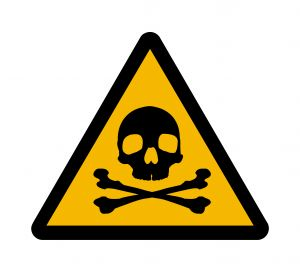Even if the harm catches you off-guard, the basis of most threats can be seen – the car doing 60mph in a 25mph zone, the slip-potential of water pooling atop a flight of stairs, the driver focused on his phone instead of the road. Carbon monoxide, however, is neither seen nor smelled. It is a dangerous, even deadly, threat. In this entry, our San Francisco poisoning attorney focuses on automobiles and carbon monoxide, a dangerous mix.
Brief Refresher on CO Poisoning 
The Centers for Disease Control explains that carbon monoxide (“CO”) is an odorless, colorless gas that forms in combustion fumes. People and animals are put at risk when CO builds up in an enclosed or semi-enclosed space. As the gas builds in the air, it also begins to replace oxygen in the blood and deprives bodily tissues of the same. Early symptoms of exposure include headache, nausea/vomiting, weakness, chest pain, and confusion. Since these symptoms are vague and mimic many other conditions, diagnosing CO poisoning is tough.
Continued exposure can lead to a loss of consciousness and even death. Notably, the patient rarely notices their own irrational thoughts patters and a third-party may be the one who sees something amiss. If someone is acting strangely out-of-character, ask questions and consider bringing them to a hospital for evaluation; you could save their life. If you notice some of the initial symptoms yourself, especially if you are working near cars or and older furnace, seek medical help immediately
CO and Motor Vehicles
A piece from Iowa State University’s Department of Agricultural and Biosystems Engineering (“ABE”) points to the specific danger of CO and automobiles. Introducing the
matter, ABE explains:
“The lethal consequences of CO in engine exhaust is tragically illustrated by the hundreds of persons who die each year from carbon monoxide poisoning caused by a running vehicle inside a closed garage Others die or become ill in homes with attached garages, while stranded in their car, or while driving or riding in a vehicle with a defective exhaust system.”
There are numerous ways in which vehicles can lead to CO poisoning. Defective exhaust (including a blocked tailpipe) or emissions systems and even a poorly tuned engine can lead to CO buildup during normal vehicle operation. Likewise, operating or driving an automobile with the trunk/tailgate open or with holes in the vehicle’s body can also cause CO buildup. A more commonly known danger is allowing a car to warmup or otherwise run in a garage or enclosed area, which can threaten people in the same or an attached structure.
Notably, most newer cars are equipped with catalytic converters that add additional oxygen to deadly CO gas to turn it into the more common (and non-poisonous!) CO2. However, exhaust may leak out before the catalytic converter is able to do its job. The converter is also ineffective during cold starts or when oxygen is limited.
In addition to the general dangers of CO, there are added risks when CO and cars combine. When the blood concentration of CO grows and CO intoxication occurs, the poison begins to interfere with driving skills. CO intoxication causes confusion in addition to slow and increasingly irrational though patterns. Patients often do not see this themselves and taken together this can lead to dangerous, deadly, multi-car pile-ups.
How Our Northern California Injury Lawyer Can Help
If you or someone you love experienced CO poisoning, particularly if it caused permanent impairment or death, an experienced lawyer like Attorney Brod can help. Lawyers are top-notch investigators and we can help figure out when and how the patient was exposed. Depending on those answers, we might be able to bring suit such as a defective products claim against the car maker who used a risky exhaust system set-up, a repairperson who did shoddy work, or even a home builder who did not provide proper ventilation for the garage. Likewise, if you were injured in a car crash and the at-fault driver is blaming it on CO intoxication, we may be able to go after the source of the driver’s intoxication.
See Related Blog Posts:
California Lawyer on the Dangers of Carbon Monoxide Poisoning
California Toxic Torts Law and the Many Dangers (and Uses) of Chlorine
(Image by resignent)
 San Francisco Injury Lawyer Blog
San Francisco Injury Lawyer Blog

